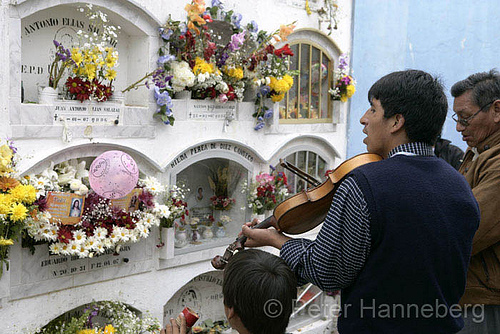 All Saint’s Day is coming up, and with it the reminder to take a moment to think about lost loved ones and ponder what life after death may be like.
All Saint’s Day is coming up, and with it the reminder to take a moment to think about lost loved ones and ponder what life after death may be like.
The most famous celebration of All Saint’s Day probably takes place in Mexico, where the holiday is known as the Day of the Dead or Día de los Muertos. The Mexican version is famous for its art and iconography, which features many statuettes and sculptures of skeletons, as well as elaborately decorated sugar skulls. The Mexican holiday also ties into a political theme by celebrating the equalizing power of death–both rich and poor die alike, and you can’t take your riches with you into the afterlife! This fit in well with the sentiments of the Mexican Revolution and continues to be an important part of the cultural identity today.
Though Mexico’s celebrations are the most famous, many cultures all over the world celebrate the Day of the Dead. For example, in Peru it is known as the Día de los Difuntos. Many indigenous Peruvian peoples had a tradition of venerating the dead, and they would sometimes mummify certain ancestors, carrying them in religious processions and offering them food and drink in return for guidance or protection. It’s interesting to think about how this type of tradition may have melded with the Catholic traditions of All Hallows Eve and All Saints Day.
Celebrants of the Día de los Difuntos believe that at midnight on Nov 1, the souls of their lost relatives begin returning. They prepare accordingly, washing and sweeping the graves and erecting special altars with food offerings and personal mementos to draw the spirits. Then the family spends Nov 1 and 2 communing with their ancestors, remembering the dead and celebrating their lives. At the end of the celebration in some regions, people put on masks in order to chase the spirits away from the graves and remind them to return to the great beyond for another year.
Día de los Difuntos is definitely a happy occasion, rather than a morbid or melancholy one. In the countryside, it is common to see musicians roving the cemeteries on this day, offering to play various traditional songs in memory of loved ones. In the cities, however, the holiday tends to be a bit more restrained, and might consist of just a short visit to the graveyard rather than a day-long celebration.